I like making knives. They’re easy, you can make a variety of styles, and they make great gifts. All my brothers, one of my sisters, and my friends all have knives made by me (whether they use them is another story). There are two ways to make a knife; one is to start from flat stock of the thickness of the blade, and then file or grind the material into the shape you want (called “stock reduction”); the other is to start with bar or round stock, flatten the blade at the forge, and shape the blade at the forge before filing or grinding. Either way, you’re going to be filing or grinding though forging tends to reduce the time spent on that if you shape it well on the anvil.
The most important part of making a knife, in my opinion, is choosing the steel. I like to work with steels in the 1075-1095 range. I’ve also worked with O1 and 5160; all these are oil quenching steels and have given me good results both in working, and heat treating without warping. They hold a good edge and seem to be tough when used hard. I made an O1 chopper I regularly use to cut brush and it’s a fine tool!
I avoid making knives out of “mystery steel” except as novelty items. Mystery steel includes old wrenches, files, saw blades, horse shoes, rebar and rail road spikes. While often these are good, strong steels they don’t harden like a good high-carbon tool or spring steel, even if quenched in water. As a result they don’t hold an edge, and often will warp or crack when quenched. I tend to stick to steel I purchase for the knives I’m giving to people who are going to use them.
This essay shows, mostly with pictures, how I make a knife from flat stock. This is by far the simplest way to make a knife (if not the most time efficient) and could potentially be done with no power tools (my first knives were made with a hacksaw and mill bastard files). But since I have power tools, I use them! They cut the time down considerably; the knife blade I made here was ready for heat treating in less than two hours. Without power tools it would have taken me at least twice, if not three times as long.
First step is to choose the type of knife I want to make. This knife is for my uncle, an avid hunter and outdoorsman, so I thought a good skinner would be appropriate. I have lots of these blanks of various blades I got on line; I print them and glue them on to thin plywood and keep them in a box for when I need them.
Here I’ve traced the outline of the blank on to a sheet of 1075 steel. This a good knife steel that’s easy to work. I need to cut the blank out of this sheet, using an angle grinder with a cutting blade. You could also use a hacksaw.
Once I’ve cut the blank off the sheet, I need to rough out the blade, again with a cutting blade. You could also use a hacksaw.
After that, it’s shaping the blade, again with the angle grinder but this time with a grinding blade. When I first started I did this with mill bastard files; this was the part that always took longest and was very tedious. With an angle grinder it only takes a few minutes.
Now that I’ve got the rough shape, time to head to the belt grinder! I use a really coarse (60 or 80 grit) belt initially since I really want to grind down so as little of the black lines are showing. Here’s the blade when I start
And here’s after I’m done:
Basically the goal here is to have a final outline of the knife, smoothing out all the rough spots and making sure everything is ready to go before grinding the bevel. That little round part at the end of the blade (the finger notch) still needs some work, so I use a round file:
And here’s the blade ready for beveling:
That’s it for this installment; next up will be grinding the bevel!


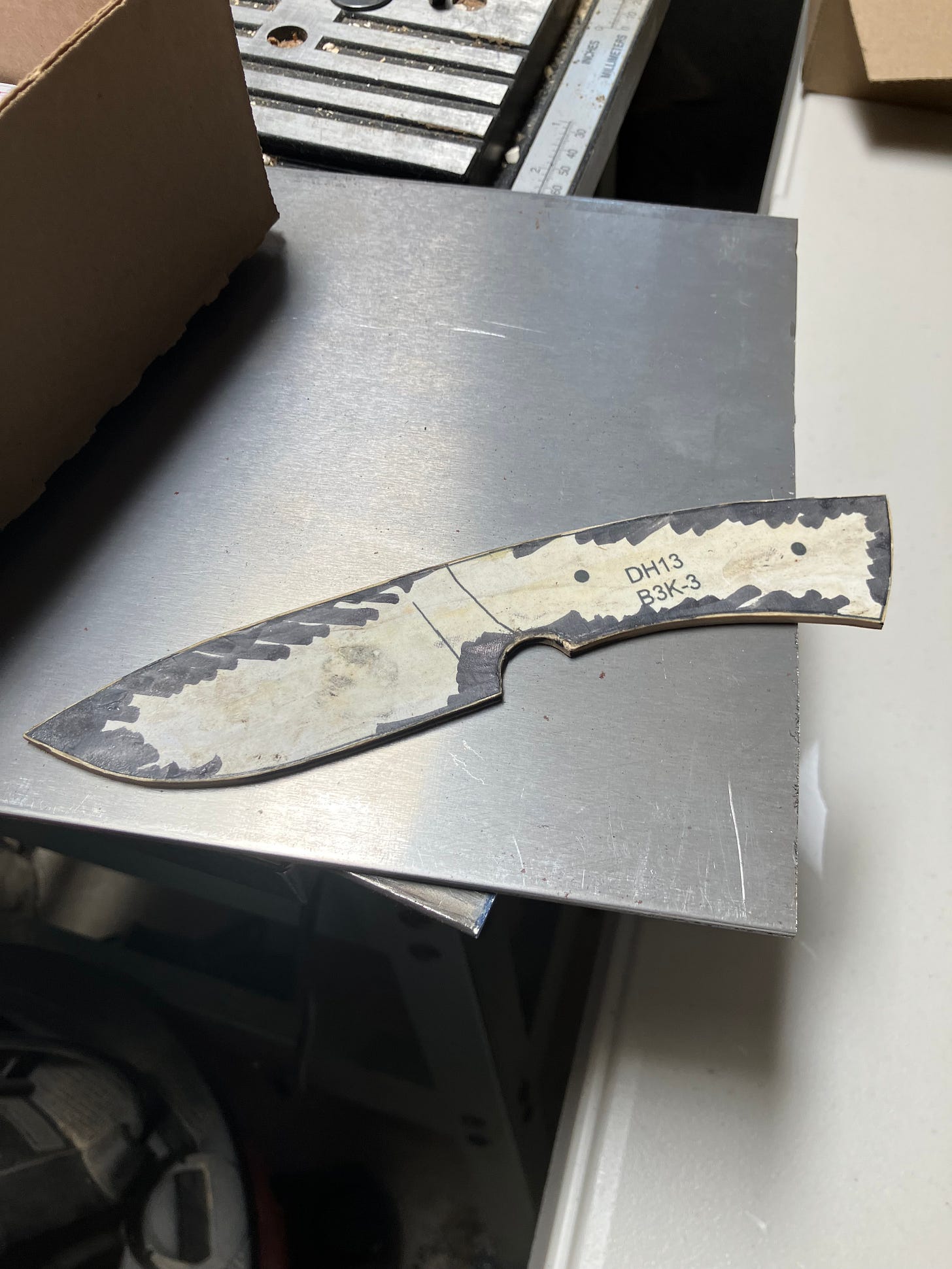
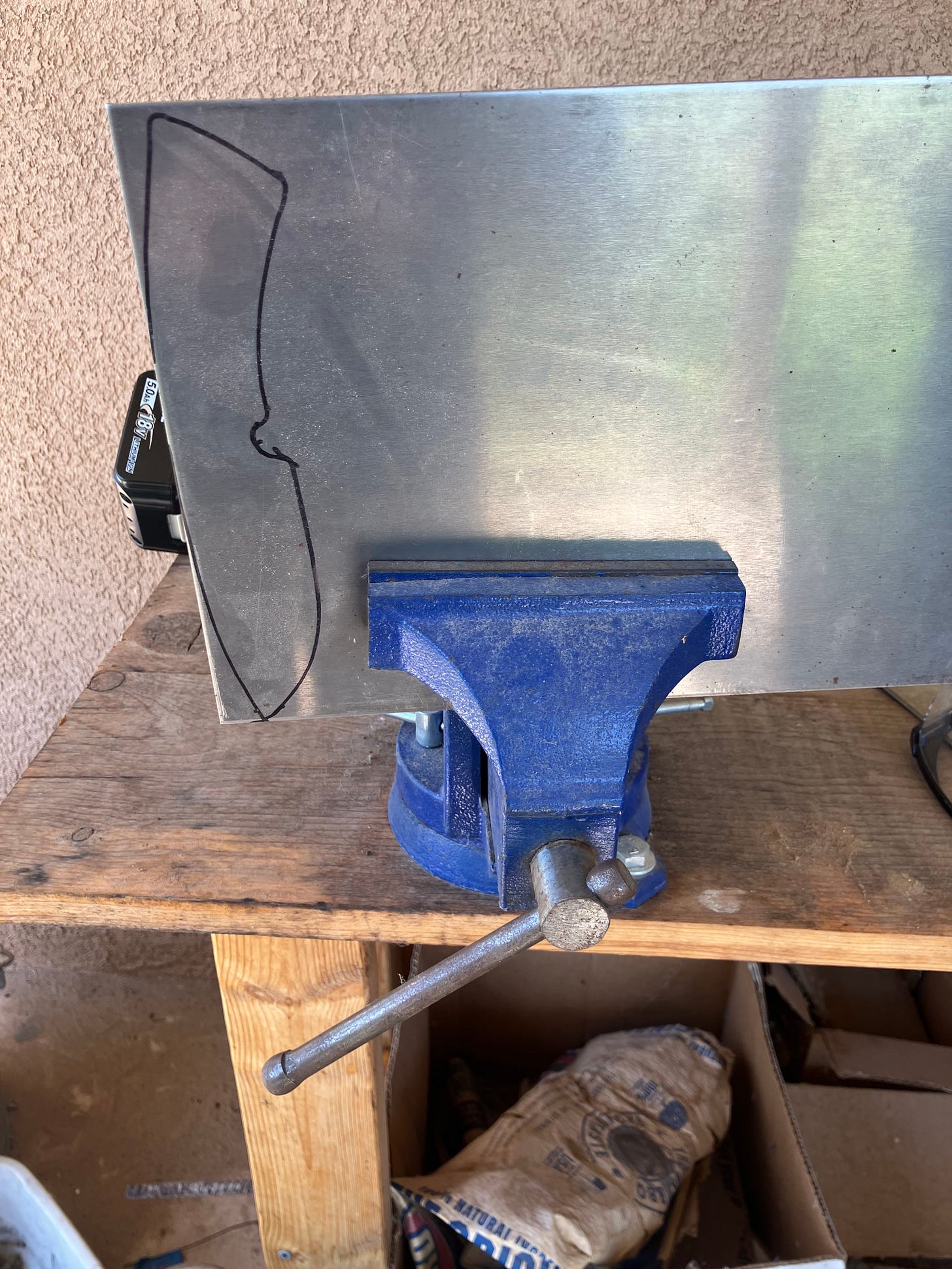
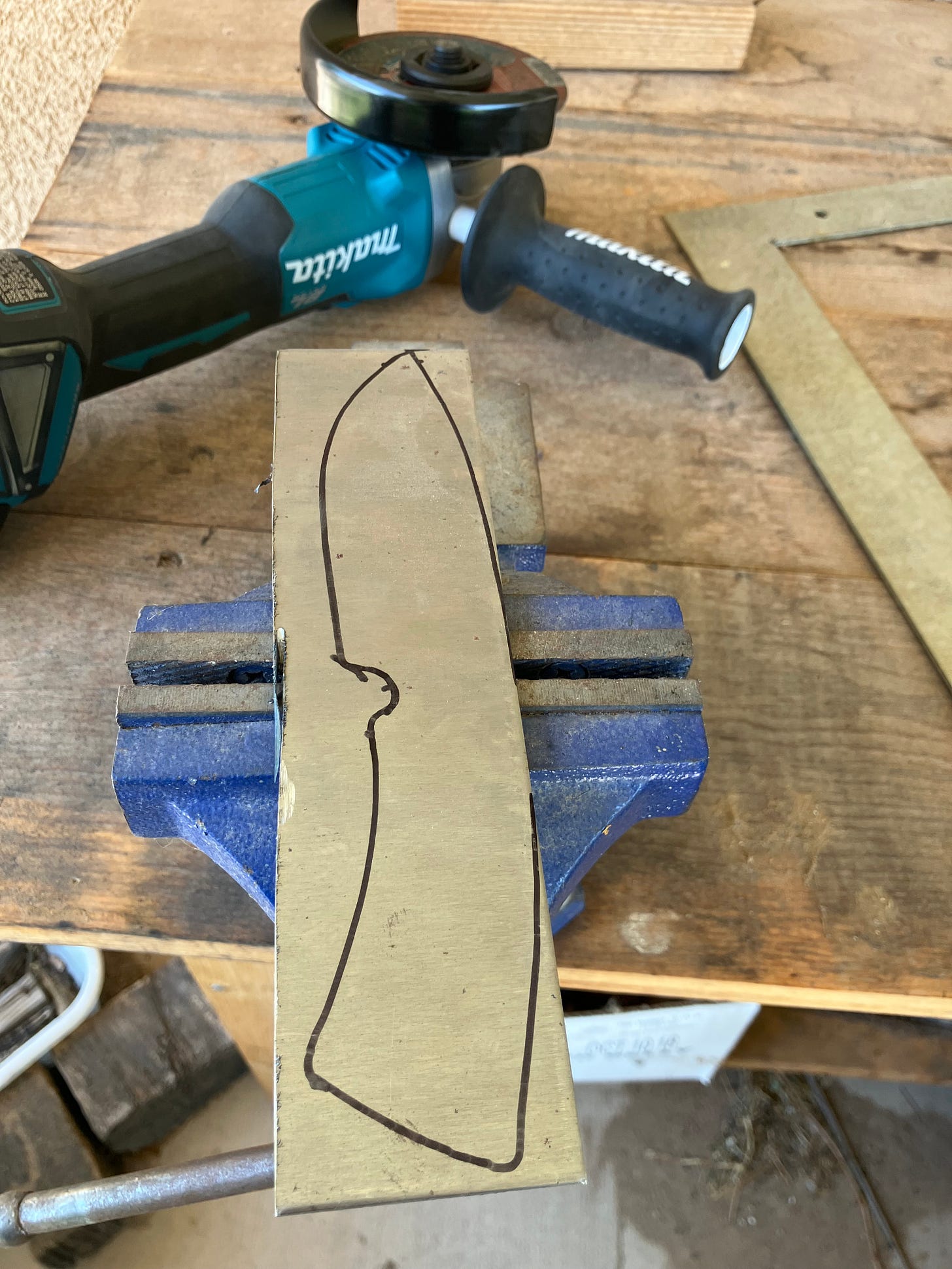
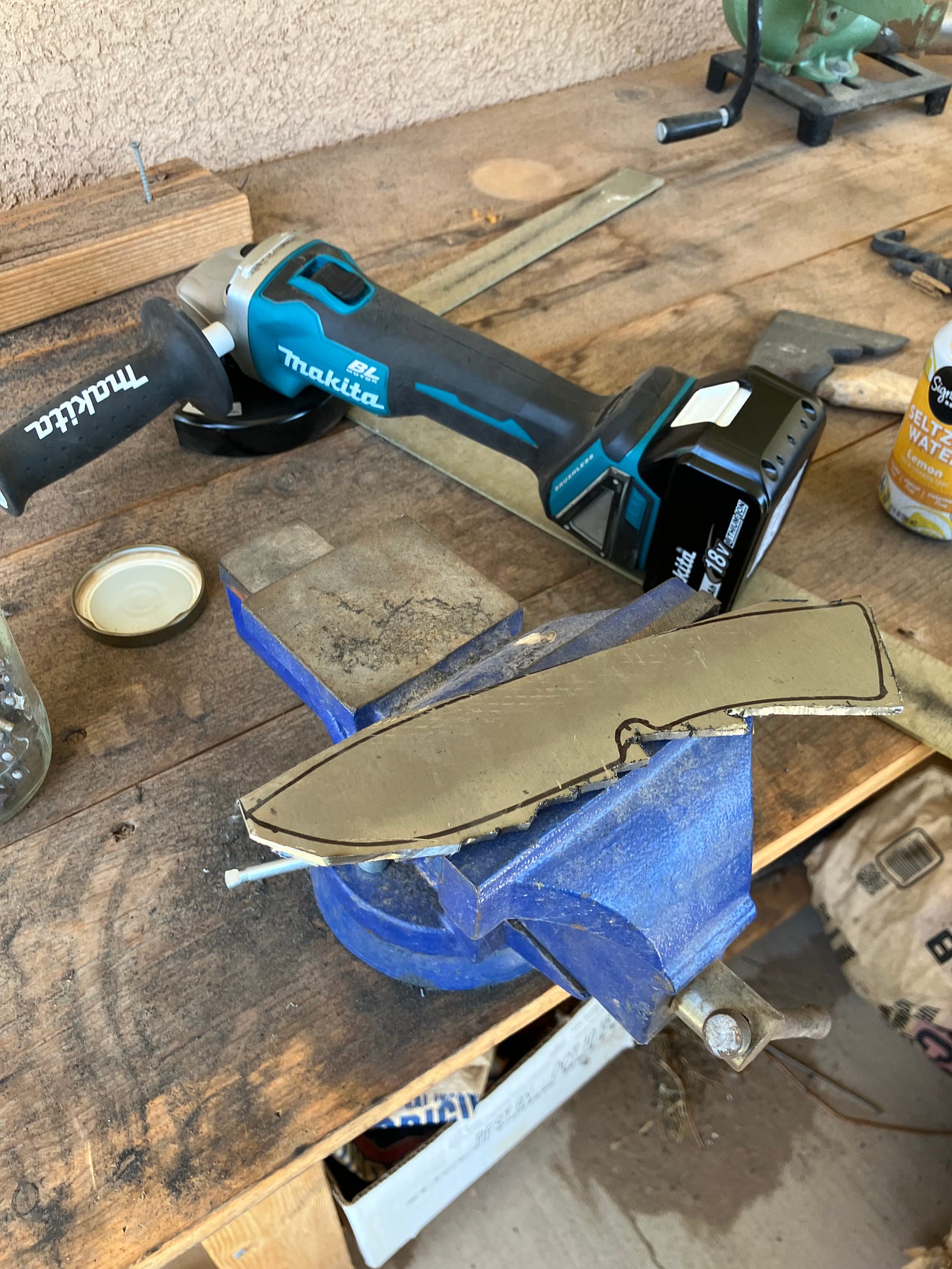
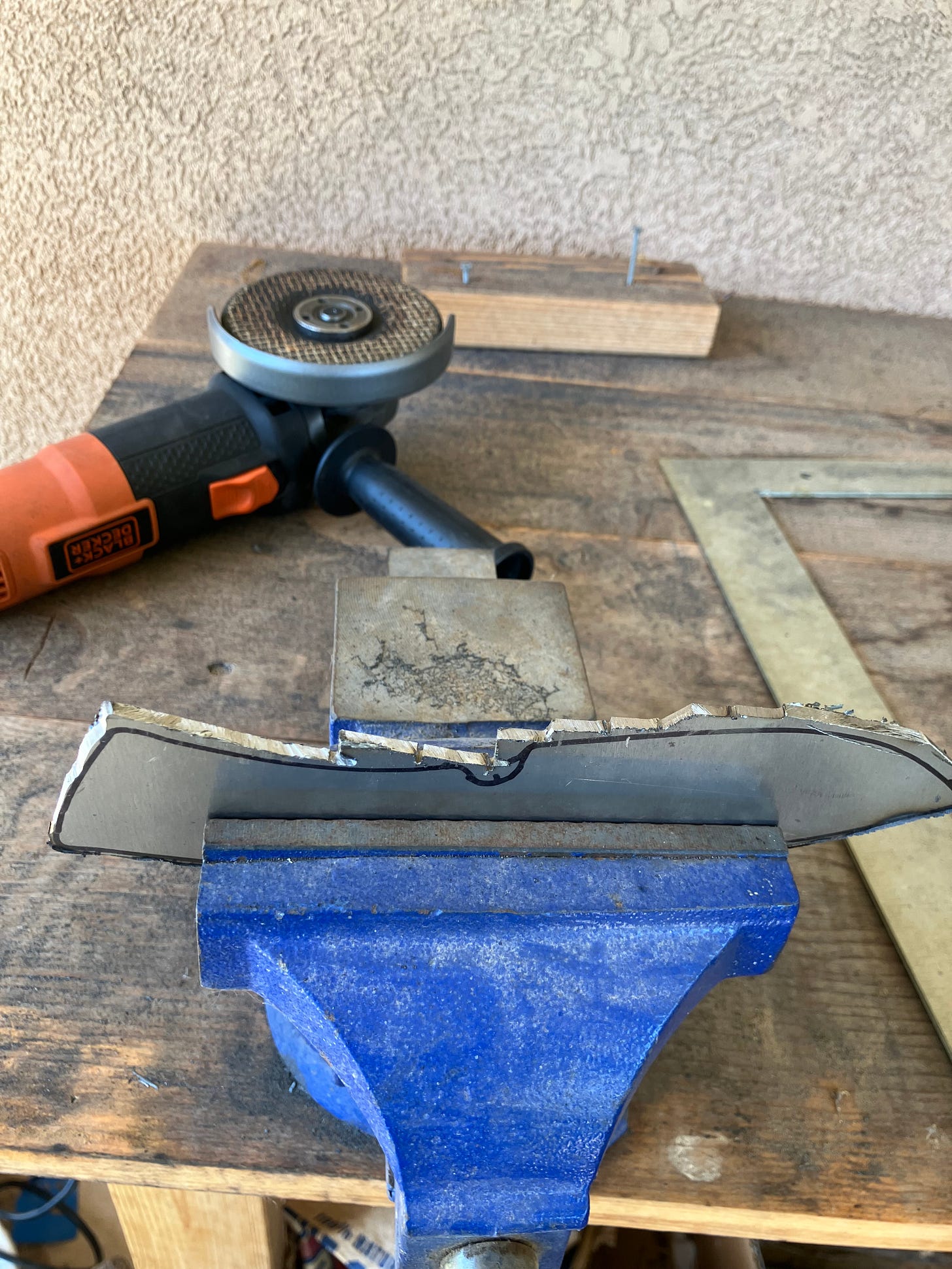
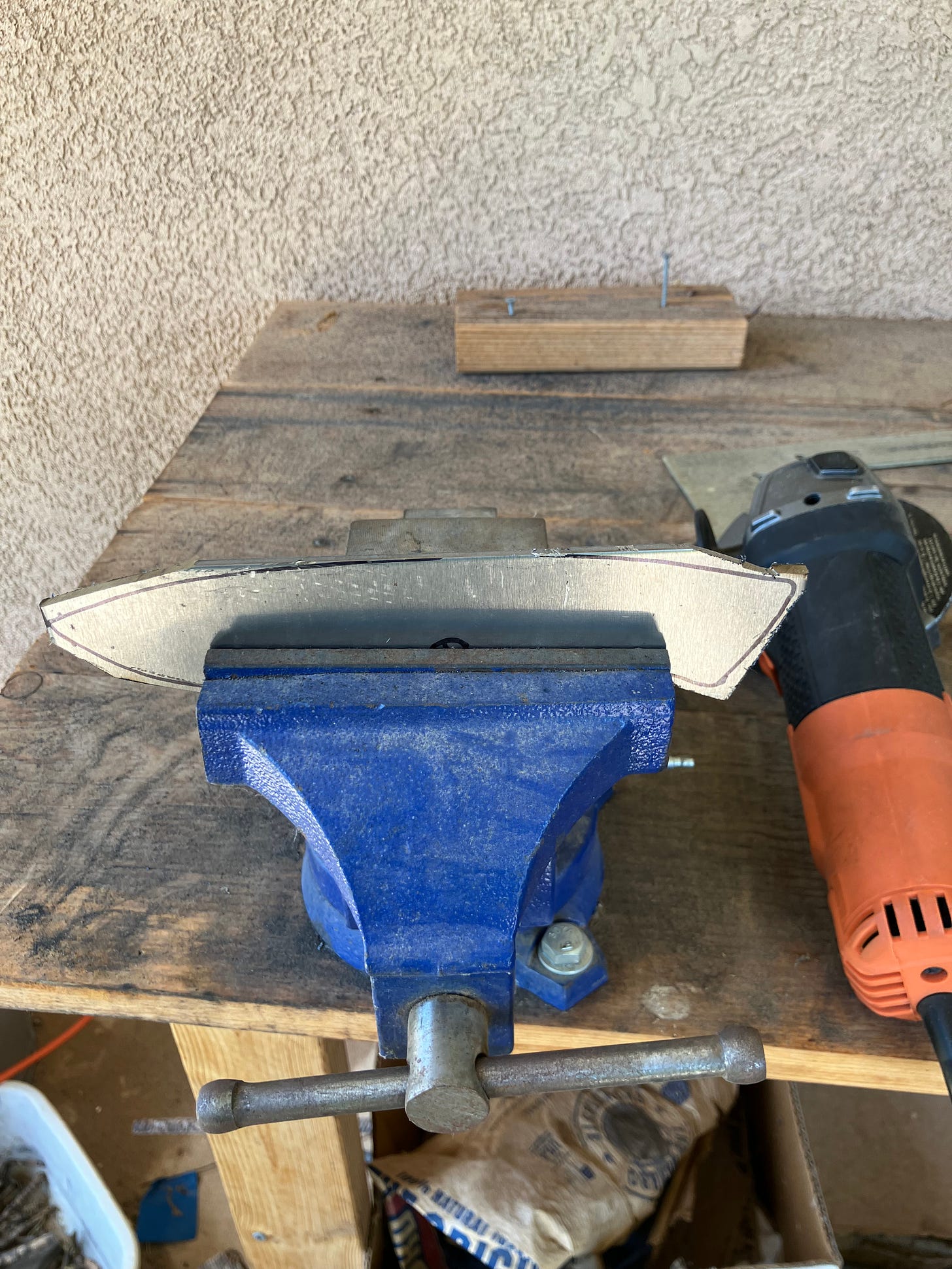
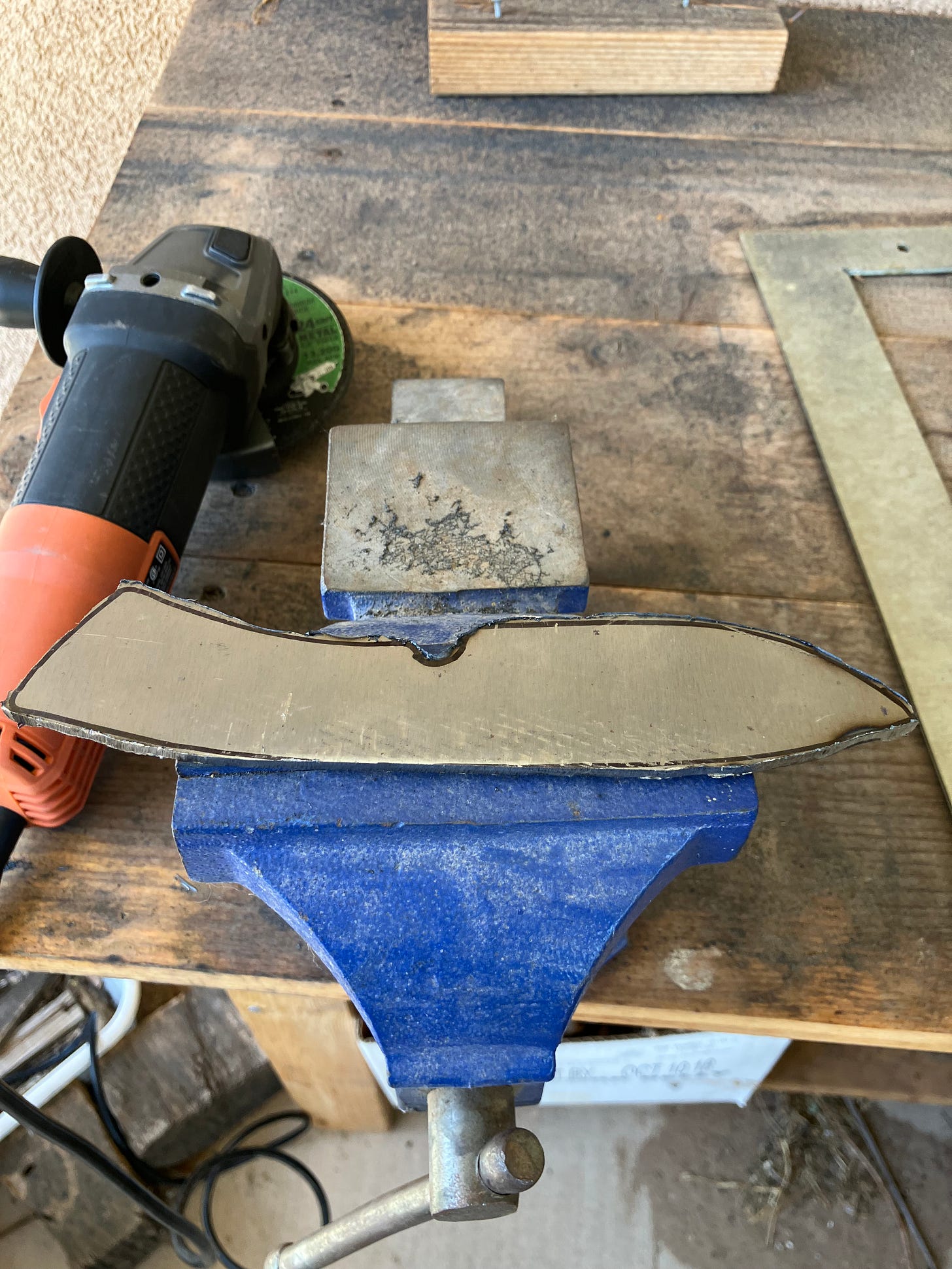
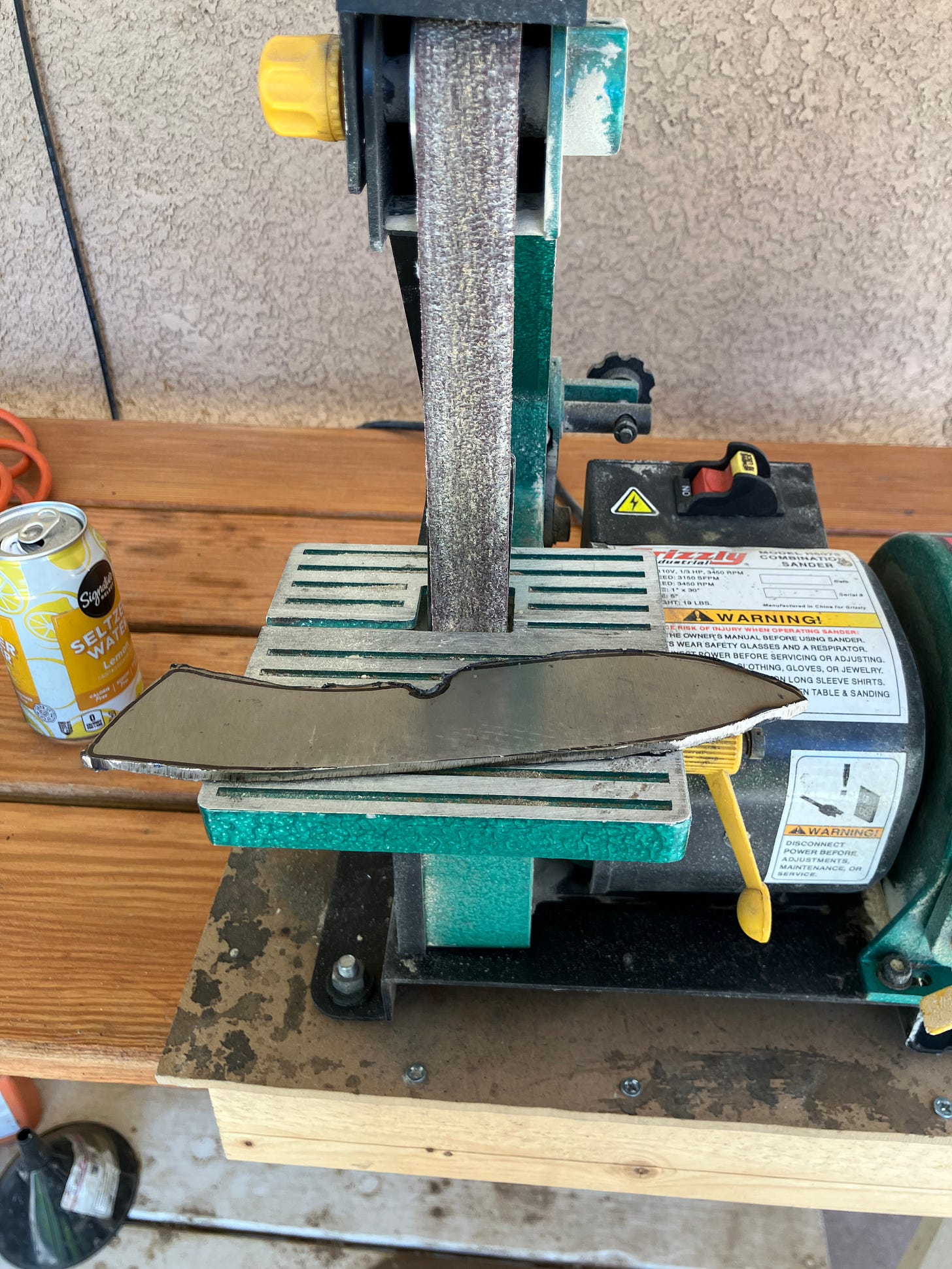
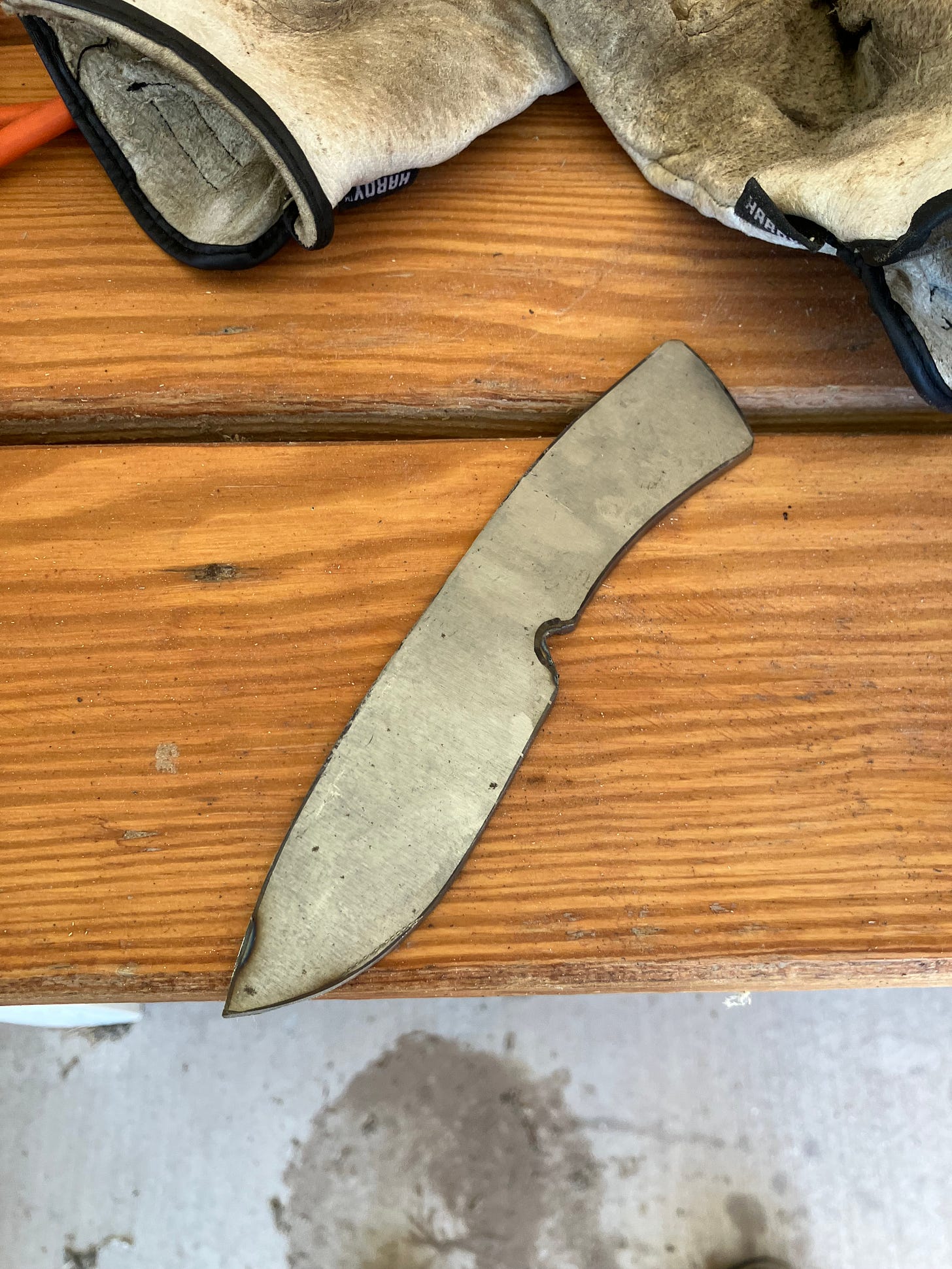
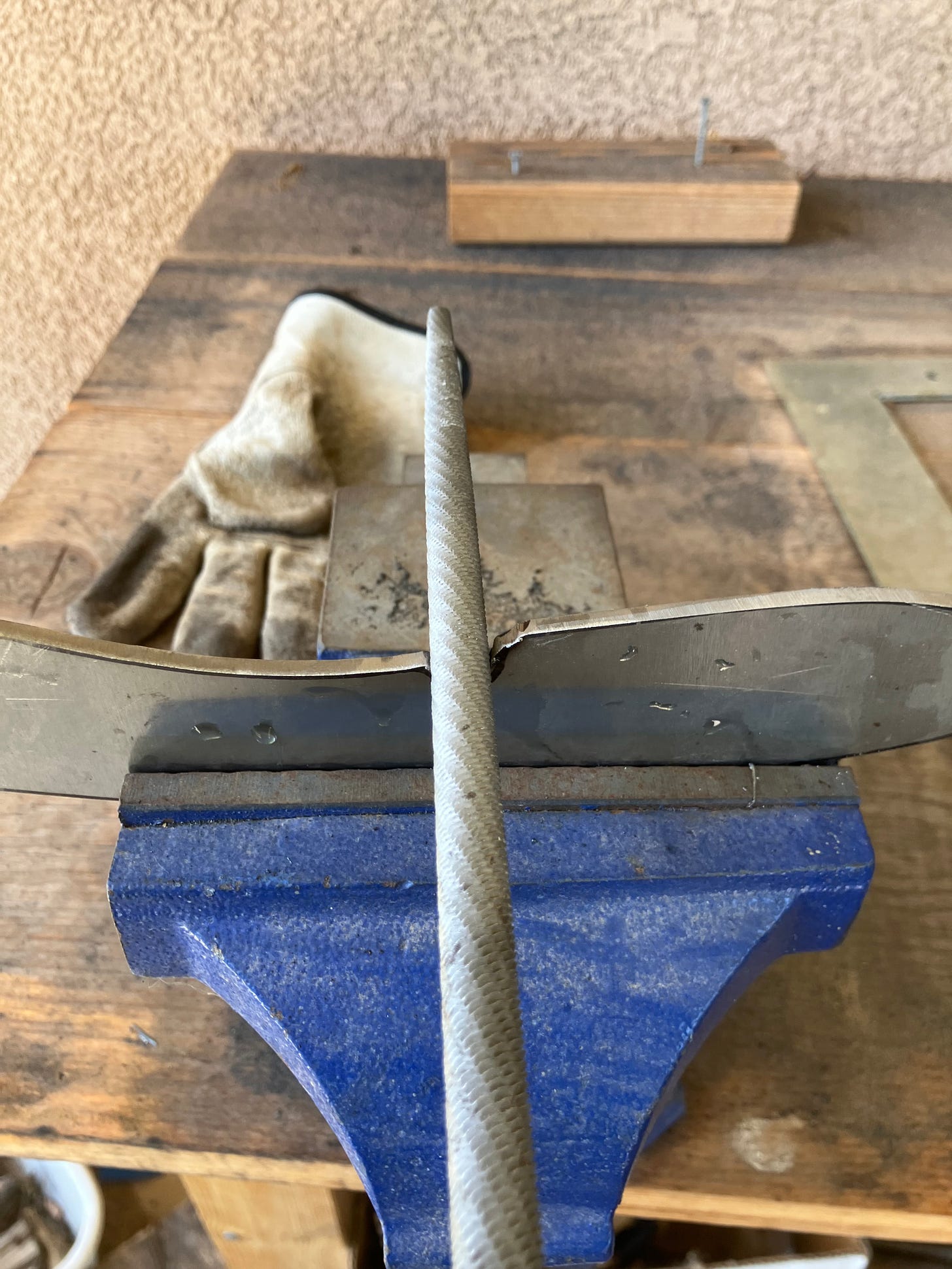
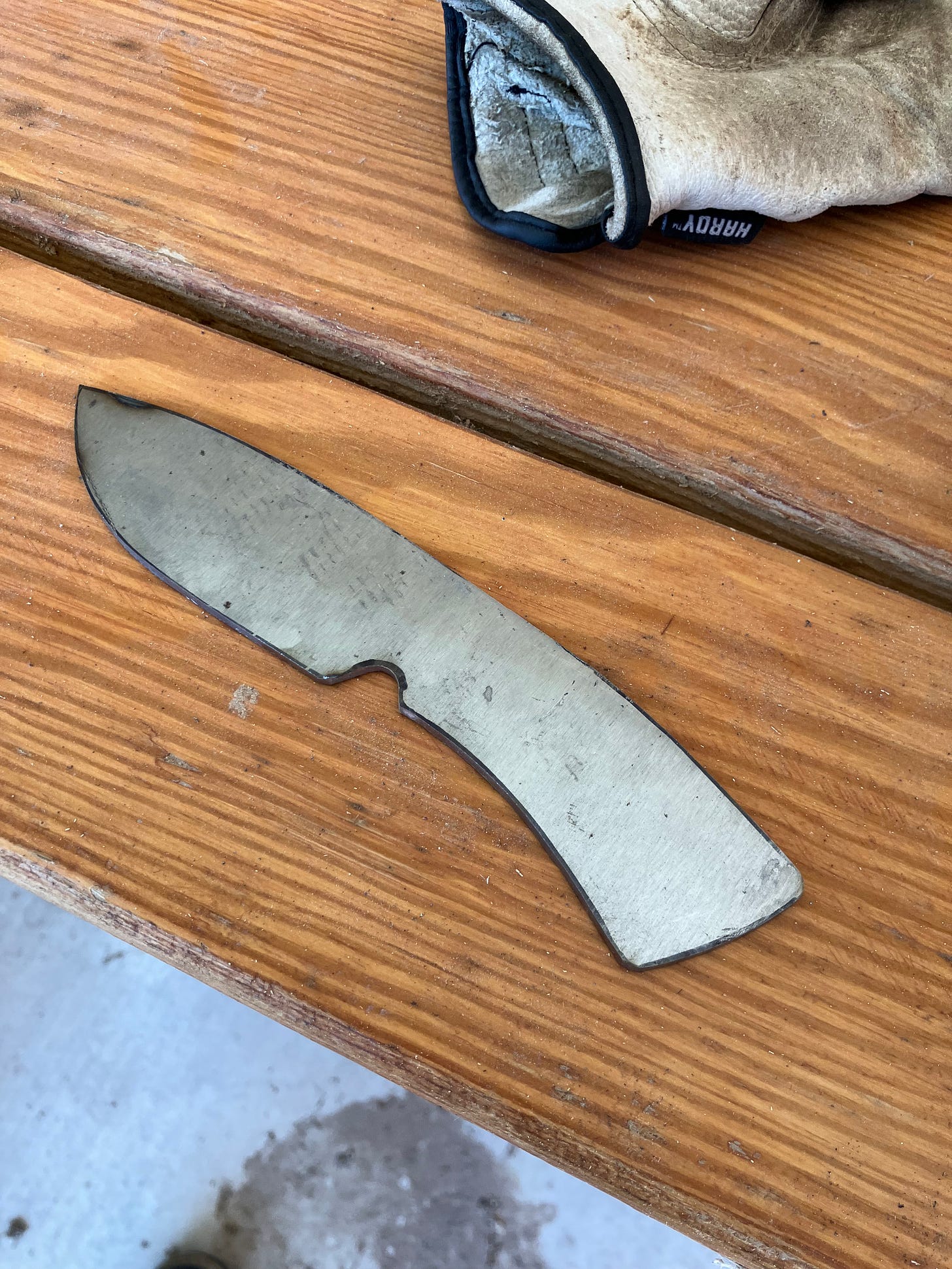
My grandpa used to make knives like yours, but he didn’t have a lot of tools, just a grinder and a couple of hacksaws. It was fun to watch him, and the knives he made we used all the time in my mom’s kitchen. I don’t know where they ended up. If I did, I’d probably still be using one.
You have a home machine shop. I have two kukris made in India, which were made from old car springs. I use them to cut invasive vines threaten to choke out trees on our property. For everyday use, I have a couple of pocket knives. I don't hunt or fish, but I admire your work in making blades.